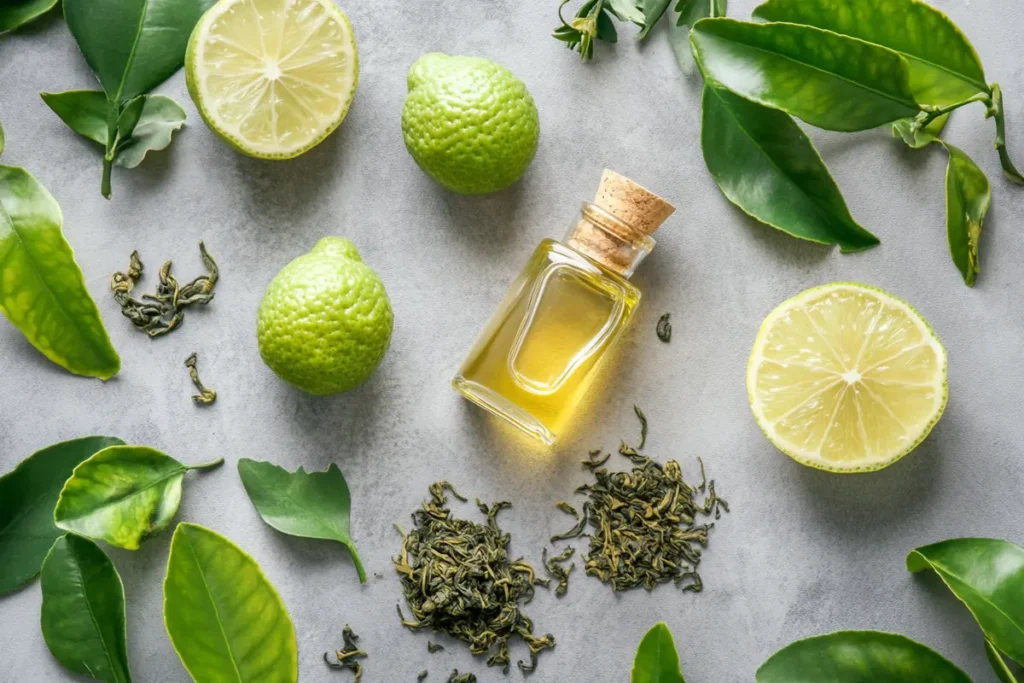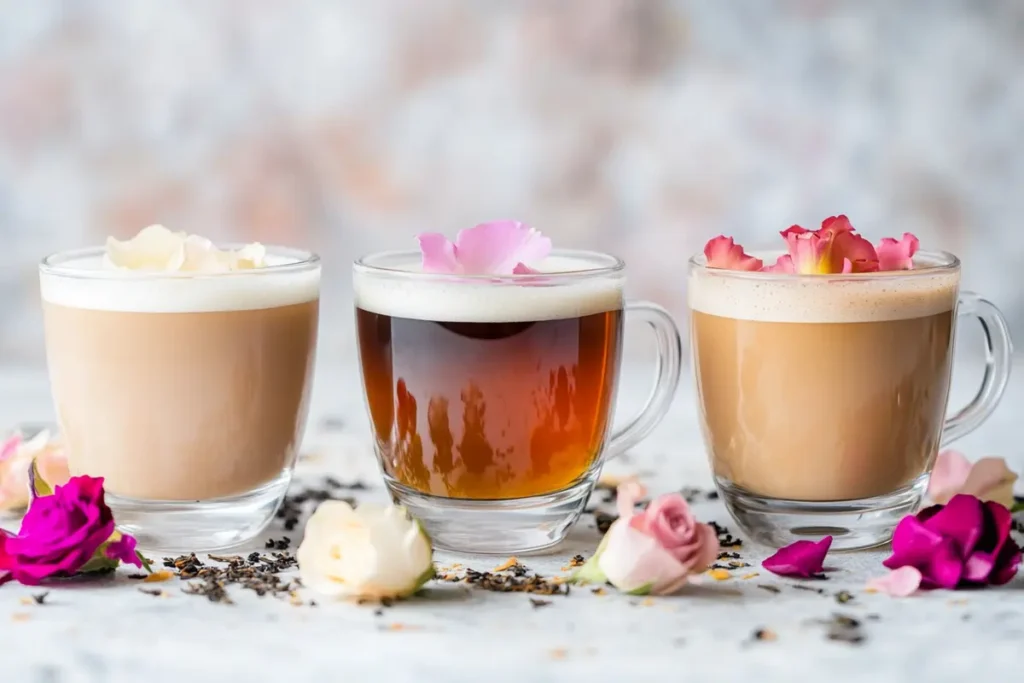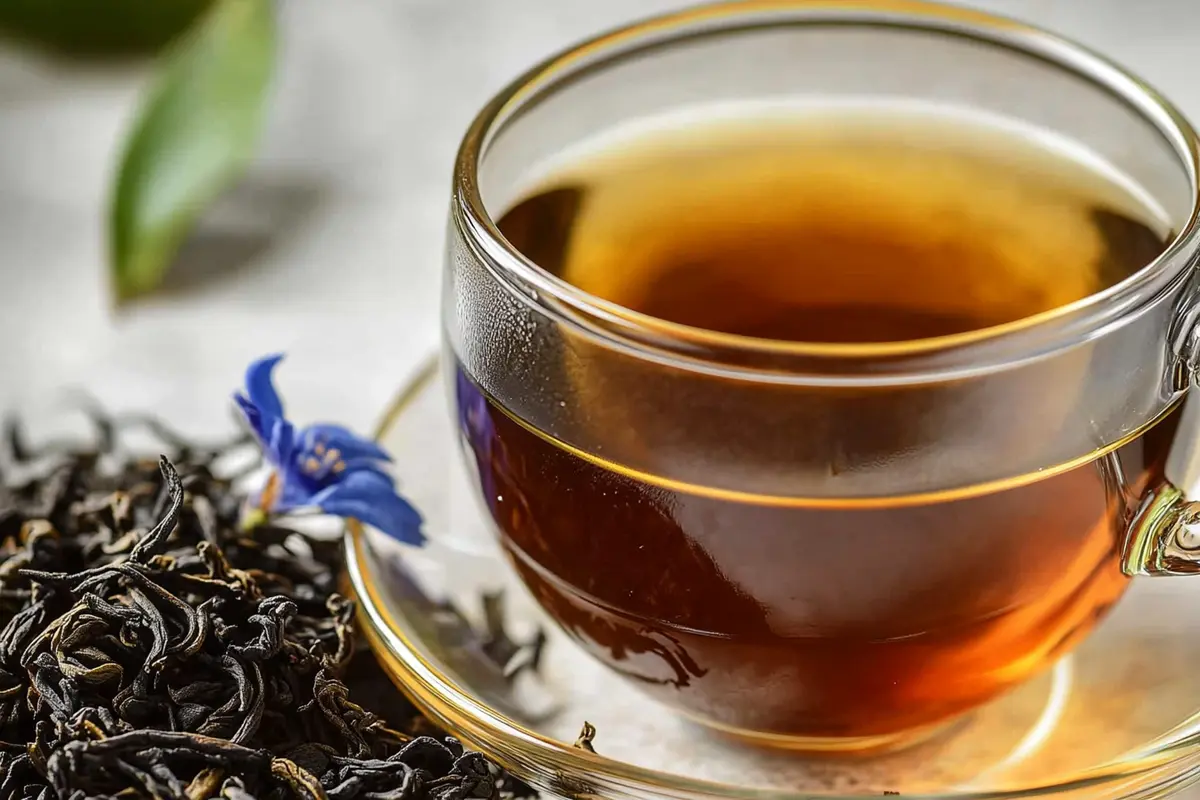Earl Grey Tea: A Timeless Blend of Flavor and Tradition
Earl Grey tea, a quintessential beverage with a rich history, continues to enchant tea enthusiasts worldwide. Known for its distinctive bergamot flavor and aromatic charm, this classic tea blend holds a special place in the world of beverages. From its intriguing origins tied to British heritage to its modern variations and health benefits, Earl Grey tea has a fascinating story to tell. This article delves deep into its history, composition, brewing techniques, and more to help you appreciate this timeless drink.
Introduction to Earl Grey Tea
Overview of Earl Grey Tea
Earl Grey is more than just a beverage; it’s a sensory experience. This beloved tea blend is traditionally made from black tea infused with bergamot oil, giving it its signature citrusy aroma and taste. While it originated as a British staple, Earl Grey has gained global popularity due to its bold flavor and versatility. Whether enjoyed hot or cold, this tea is a treat for the senses.
Origin of the Name
The origins of the name “Earl Grey” are steeped in history and legends. It’s widely believed that the blend is named after Charles Grey, the 2nd Earl Grey, who served as British Prime Minister in the 1830s. One popular tale suggests that a Chinese mandarin gifted this unique blend to the Earl as a token of gratitude for saving his son.
Other accounts point to Earl Grey’s role in abolishing the monopoly of the East India Company on tea imports, which led to wider availability of unique blends like this one. Regardless of its exact origins, the association with nobility and sophistication remains a key part of Earl Grey tea’s identity.
Why is Earl Grey Tea So Popular?
What sets Earl Grey tea apart is its distinctive citrus-infused flavor profile. Unlike other teas, the addition of bergamot oil elevates the taste, creating a refreshing and aromatic experience. It appeals to both traditionalists who love classic black tea and adventurous drinkers looking for something with a twist.
In recent years, Earl Grey has become a versatile ingredient, inspiring innovative recipes and variations. From classic hot brews to modern creations like Earl Grey-infused desserts, it has carved a niche in culinary culture.
Explore further to uncover the secrets of this remarkable tea, its health benefits, and how to brew the perfect cup.
Historical Background of Earl Grey Tea
Early References and Development
Earl Grey tea’s roots date back to the early 19th century, though its exact origin story remains shrouded in mystery. Historical records suggest that tea flavored with bergamot oil was initially used to enhance the taste of lower-quality black teas. This ingenious practice not only masked any unpleasant notes but also added a refreshing, citrusy twist.
One of the earliest written references to tea infused with bergamot oil appears in the 1820s. It wasn’t initially called “Earl Grey,” but it was widely appreciated for its unique flavor profile. Over time, this blend evolved into the iconic Earl Grey we know today.
Legends and Anecdotes
The most famous legend about Earl Grey tea is, of course, tied to its namesake, Charles Grey. As the story goes, a Chinese mandarin crafted the blend as a gesture of gratitude after the Earl supposedly saved his son from drowning. The mandarin gifted him the recipe, which was later shared and commercialized.
Another theory links the tea to a diplomatic gift sent to the British court, where the distinctive flavor captivated tea drinkers of the time. While the historical accuracy of these tales is debatable, they add an air of mystique and charm to the tea’s origins.
Commercial Success and Global Expansion
The commercial journey of Earl Grey tea began when Twinings, the famous British tea brand, started selling the blend under its current name. Over time, it gained immense popularity, not just in Britain but globally. Its elegant flavor and connection to British aristocracy played a pivotal role in its success.
Today, Earl Grey is celebrated worldwide as a symbol of sophistication and indulgence. Its history, intertwined with intriguing stories and cultural significance, continues to make it a favorite among tea enthusiasts.
Composition and Ingredients

Base Teas Used in Earl Grey
The foundation of Earl Grey tea is traditionally a high-quality black tea. Popular varieties like Assam, Darjeeling, or Chinese Keemun are often used due to their robust flavors and ability to complement the boldness of bergamot oil. These teas bring richness and depth to the blend, ensuring a satisfying drinking experience.
Some modern adaptations use green tea, white tea, or even herbal bases to create variations that cater to different tastes. These alternatives maintain the citrusy essence of the blend while offering lighter, more delicate notes.
The Magic of Bergamot Oil
The ingredient that truly defines Earl Grey tea is bergamot oil, derived from the peel of the bergamot orange—a citrus fruit primarily grown in Italy. This oil has a bright, zesty, and slightly floral aroma that perfectly enhances the boldness of black tea.
Bergamot oil is not just a flavoring agent; it’s also known for its therapeutic properties. With its calming scent, it’s often associated with stress relief and mood enhancement. The balance between the tea’s astringency and the oil’s refreshing citrus tang creates a harmonious flavor that’s hard to resist.
Flavoring Techniques
Crafting the perfect Earl Grey tea requires precision. Tea producers use several methods to infuse bergamot oil into the tea leaves:
- Spraying: Tea leaves are sprayed with bergamot essential oil, ensuring even distribution.
- Blending: Some blends include dried bergamot rind or zest for an authentic, natural flavor.
- Infusion: High-quality artisanal teas may use slow infusion techniques, allowing the leaves to absorb the citrusy notes over time.
The combination of traditional and modern techniques ensures that each cup of Earl Grey is as flavorful and aromatic as possible.
Natural vs. Artificial Flavoring
Not all Earl Grey teas are created equal. Some brands rely on artificial bergamot flavoring, which lacks the complexity and authenticity of natural bergamot oil. When choosing your tea, opt for blends that explicitly state the use of natural bergamot for a superior experience.
Variations of Earl Grey Tea

Lady Grey: A Softer Twist
One of the most popular variations of Earl Grey tea is Lady Grey. This blend adds a delicate touch to the original by incorporating cornflower petals and Seville orange. The result is a lighter, fruitier version that appeals to those who find traditional Earl Grey too robust. Its floral undertones make it an elegant choice for afternoon tea.
London Fog: A Modern Favorite
The London Fog is a trendy Earl Grey-based beverage that has taken coffee shops by storm. This creamy concoction combines Earl Grey tea with steamed milk and a hint of vanilla syrup, creating a latte-like treat that’s both comforting and indulgent. It’s a perfect introduction for those new to the world of tea.
French Earl Grey: Floral Elegance
French Earl Grey offers a luxurious twist with the addition of rose petals, lavender, and sometimes even hints of marigold. These floral notes give the tea a sweet and perfumed aroma, enhancing its appeal to those who love delicate flavors. This variation is particularly popular in artisanal tea shops.
Earl Grey Green: A Healthier Choice
For those seeking a lighter alternative, Earl Grey Green swaps out the black tea base for green tea. This variation retains the iconic bergamot flavor but with a milder, grassy undertone. It’s a healthier option, boasting lower caffeine levels and a higher concentration of antioxidants.
Earl Grey Crème: Smooth and Velvety
Earl Grey Crème takes the classic blend to new heights with the addition of vanilla or creamy flavoring. This variation softens the tea’s citrusy edge, creating a rich, dessert-like experience that pairs beautifully with pastries or biscuits.
Other Unique Blends
Innovative tea makers have created countless Earl Grey variations, such as:
- Russian Earl Grey: Featuring additional citrus elements like lemon or grapefruit.
- Smoky Earl Grey: Infused with lapsang souchong for a bold, smoky twist.
- Herbal Earl Grey: Caffeine-free blends made with rooibos or chamomile as the base.
Health Benefits and Considerations
Packed with Antioxidants
Earl Grey tea, particularly when made from black or green tea, is an excellent source of antioxidants. These compounds, such as catechins and theaflavins, play a vital role in combating oxidative stress, reducing inflammation, and supporting overall cellular health. Regular consumption of Earl Grey may help lower the risk of chronic conditions like heart disease and certain cancers.
Supports Heart Health
The flavonoids in black tea, combined with bergamot oil, may contribute to improved heart health. Studies suggest that drinking black tea regularly can help reduce bad cholesterol (LDL) levels while increasing good cholesterol (HDL). Bergamot’s natural polyphenols may also aid in maintaining healthy blood pressure.
A Natural Mood Booster
One of the standout benefits of Earl Grey tea is its ability to uplift the mood. The calming properties of bergamot oil can help reduce stress and anxiety while promoting a sense of relaxation. Sipping a warm cup of Earl Grey can be a comforting ritual that soothes the mind and body.
Boosts Digestive Health
Earl Grey tea has long been celebrated for its digestive benefits. The natural compounds in bergamot oil may help alleviate symptoms of indigestion, bloating, and nausea. Additionally, the tannins in black tea can promote gut health by fostering a balanced microbiome.
Moderate Caffeine Content for Energy
Containing less caffeine than coffee but enough to provide a gentle energy boost, Earl Grey tea strikes the perfect balance. Its moderate caffeine levels make it a great option for those looking for an alternative to coffee, helping you stay alert without the jitters.
Considerations and Potential Interactions
While Earl Grey offers numerous health benefits, moderation is key. Overconsumption can lead to caffeine-related side effects such as restlessness or insomnia, particularly in those sensitive to stimulants.
It’s also worth noting that bergamot oil may interact with certain medications, including statins and antidepressants. If you’re on medication or have specific health concerns, consult with your healthcare provider before incorporating large amounts of Earl Grey into your diet.
Culinary Uses of Earl Grey Tea
Earl Grey in Baking and Desserts
Earl Grey tea’s distinctive citrus notes make it a perfect ingredient for baked goods and desserts. Its flavor pairs wonderfully with creamy and sweet treats, adding a unique twist to traditional recipes. Some popular uses include:
- Earl Grey Cookies: Shortbread or sugar cookies infused with tea leaves or bergamot essence.
- Tea Cakes and Muffins: Earl Grey adds a delicate, aromatic flavor to cakes and muffins, often enhanced by citrus or vanilla glazes.
- Ice Cream and Custards: Earl Grey can be steeped in milk or cream to create deliciously fragrant ice creams, custards, or puddings.
The subtle complexity of Earl Grey enhances the depth of flavors in desserts, turning simple recipes into gourmet delights.
Savory Dishes with Earl Grey
Though less common, Earl Grey can shine in savory applications as well. Its earthy and citrusy notes make it a great ingredient for:
- Marinades: Steeped Earl Grey tea can be used as a base for marinades, adding a unique twist to poultry or fish.
- Sauces and Glazes: The tea’s flavor complements honey or citrus-based glazes, creating a balance of sweet and savory.
Modern Beverages Inspired by Earl Grey
Earl Grey has sparked a wave of creative beverage innovations. Aside from traditional tea, it’s now a star ingredient in modern drinks, including:
- Earl Grey Lattes: Also known as London Fog, these creamy beverages combine steamed milk, vanilla, and Earl Grey for a comforting twist.
- Iced Earl Grey Tea: A refreshing option that’s perfect for warm days, often paired with a splash of lemon or honey.
- Mocktails: Earl Grey can serve as a base for non-alcoholic cocktails, paired with fruit juices and soda for a flavorful, fizzy drink.
Cooking Tips for Using Earl Grey Tea
- When using Earl Grey in cooking, opt for high-quality loose-leaf tea or tea bags made with natural bergamot oil.
- Steep the tea in warm milk, cream, or water to infuse the flavor before adding it to recipes.
- Experiment with different variations, like Earl Grey Crème or French Earl Grey, for unique flavor profiles.
From the bakery to the dining table, Earl Grey tea’s versatility ensures it can elevate a wide range of dishes and drinks.
Brewing the Perfect Cup of Earl Grey Tea
Choosing the Right Tea
The foundation of a perfect cup of Earl Grey lies in selecting high-quality tea. Whether you prefer loose-leaf or tea bags, ensure that the blend uses natural bergamot oil for an authentic flavor. Look for options with a strong black tea base, such as Assam or Darjeeling, to provide a rich and robust taste.
For a unique experience, try variations like French Earl Grey or Earl Grey Green, which add subtle twists to the classic flavor.
Water Quality and Temperature
Water quality significantly impacts the flavor of your tea. Always use fresh, filtered water to avoid any metallic or chlorine aftertaste. The temperature of the water is equally crucial:
- For black tea-based Earl Grey: Heat water to 200–212°F (just below boiling).
- For green tea-based Earl Grey: Use slightly cooler water, around 175–185°F, to prevent bitterness.
Steeping Time and Techniques
Steeping time is key to achieving the perfect balance of flavor and aroma. Over-steeping can make the tea bitter, while under-steeping results in a weak cup. Follow these guidelines:
- Loose-leaf tea: Use 1 teaspoon of tea leaves per 8 ounces of water. Steep for 3–5 minutes.
- Tea bags: Typically require 3–4 minutes, but always refer to the packaging for specific instructions.
Pro tip: Cover your cup while steeping to retain heat and maximize flavor extraction.
Enhancements and Pairings
Earl Grey tea is versatile and can be enjoyed in various ways:
- Classic Style: Drink it plain to fully savor the rich, citrusy notes.
- With Milk or Cream: Add a splash of milk or a milk alternative for a creamier texture. For an indulgent treat, make a London Fog by adding steamed milk and vanilla syrup.
- Sweeteners: A dash of honey, sugar, or agave syrup can enhance the tea’s natural sweetness.
- Pairing Suggestions: Enjoy your cup with scones, biscotti, or light citrus-flavored desserts for a complementary flavor profile.
Cold Brew for Iced Earl Grey Tea
For a refreshing twist, try cold brewing Earl Grey tea:
- Add 2 teaspoons of loose-leaf tea (or 2 tea bags) to a pitcher of cold water.
- Refrigerate for 8–12 hours, depending on your desired strength.
- Strain and serve over ice with a slice of lemon or a sprig of mint.
By paying attention to these details, you can elevate your tea experience and unlock the full potential of Earl Grey’s distinctive flavor and aroma.
Frequently Asked Questions About Earl Grey Tea
What is Earl Grey tea?
Earl Grey tea is a blend of black tea infused with bergamot oil, a citrus extract derived from the peel of bergamot oranges. Known for its fragrant and slightly tangy flavor, it is a beloved choice among tea enthusiasts. Variations include green tea-based and herbal versions, catering to a wide range of tastes.
Does Earl Grey tea contain caffeine?
Yes, Earl Grey made with black tea contains caffeine. On average, a cup has about 40–70 milligrams of caffeine, depending on the type and brewing time. For those sensitive to caffeine, decaffeinated versions or herbal substitutes are widely available.
Can I add milk to Earl Grey tea?
Absolutely! While traditional Earl Grey is often enjoyed plain, many people love adding milk or milk alternatives to create a creamier texture. For a luxurious treat, try a London Fog—a latte-style version of Earl Grey with steamed milk and vanilla syrup.
What are the health benefits of Earl Grey tea?
Earl Grey tea offers several health benefits, including:
- Antioxidant support: Helps combat oxidative stress.
- Heart health: May reduce bad cholesterol levels.
- Mood enhancement: Bergamot oil is known for its calming properties.
- Digestive aid: Promotes gut health and alleviates nausea.
However, moderation is key, as excessive consumption can lead to caffeine-related side effects.
Are there caffeine-free options for Earl Grey tea?
Yes, many brands offer decaffeinated Earl Grey tea or herbal blends that mimic the flavor using ingredients like rooibos and bergamot. These options are ideal for those who want to enjoy the tea’s signature flavor without the caffeine kick.
How should I store Earl Grey tea?
To maintain its freshness and aroma, store Earl Grey in an airtight container away from direct sunlight, moisture, and strong odors. A cool, dry pantry is ideal. Proper storage ensures the tea retains its flavor for months.
What foods pair well with Earl Grey tea?
Earl Grey tea pairs beautifully with light, citrus-flavored desserts like lemon bars or shortbread cookies. It also complements savory dishes such as smoked salmon or mild cheeses. Its versatile flavor makes it a delightful companion for various meals and snacks.
Conclusion
Earl Grey is more than just a beverage; it’s a cultural icon and a symbol of sophistication. From its fascinating historical origins to its distinctive bergamot flavor, this tea has captivated the hearts of millions across the globe. Whether you’re savoring a traditional cup, experimenting with variations like Lady Grey, or incorporating it into culinary creations, Earl Grey offers something unique for everyone.
Its health benefits, versatility, and connection to rich traditions make it a timeless favorite. As you brew your next cup, take a moment to appreciate the craftsmanship, history, and aromatic delight that Earl Grey tea brings to your table.
Whether you’re a seasoned tea lover or a curious newcomer, exploring the world of Earl Grey tea is a journey worth taking.

